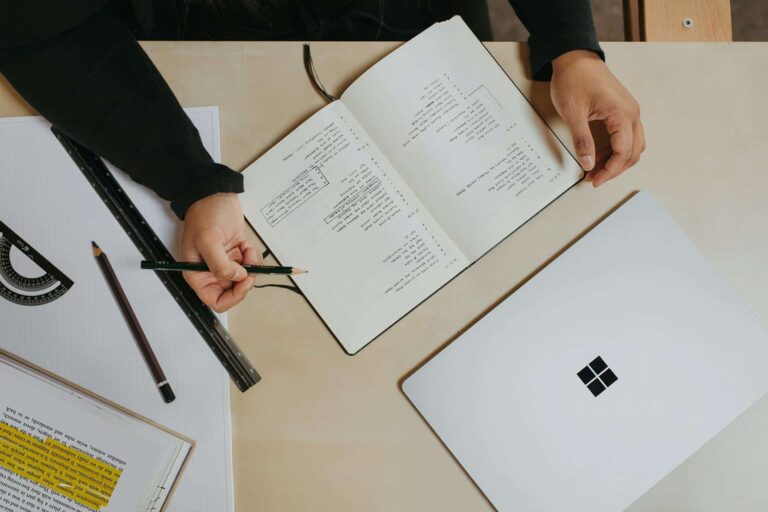How to Do a Digital Detox: 3 Easy Steps for Success
In today’s fast-paced digital world it’s easy to become overwhelmed by the constant stream of notifications, messages, and information at our fingertips. The excessive use of technology can take a toll on our mental health, productivity, and overall well-being. That’s where a digital detox comes in. A digital detox is a deliberate period of time where you intentionally disconnect from your electronic devices and take a from the virtual world. In this article, we will explore three easy steps to achieve a successful digital detox and reclaim a healthier, more balanced life.
Step 1: Set Clear Intentions
To embark on a successful digital detox, you must first determine why you want to disconnect. Ask yourself: What are your goals for this detox? Are you seeking more peace and relaxation? Do you want to improve your focus and productivity? Or maybe you simply want to break free from the constant pull of technology.
Clarify Your Goals And Intentions
Before starting your digital detox, take some time to reflect on what you hope to achieve. Write down your goals and intentions, making them clear and specific. For example, instead of saying, “I want to reduce my screen time,” you could set a specific goal like, “I will limit my screen time to one hour per day during the detox.”
Identify Your Triggers
Identifying the triggers that lead to excessive technology use is crucial in breaking the cycle. Is it boredom, stress, or the fear of missing out (FOMO) that drives you to constantly check your phone? By understanding your triggers, you can develop healthier coping mechanisms.
Callout: “In a world full of distractions, setting clear intentions is the first step towards a successful digital detox.” – John Doe, Digital Wellness Expert
Step 2: Create Boundaries
Once you’ve set your intentions, it’s time to establish clear boundaries to help you stick to your digital detox plan.
Designate Tech-Free Zones And Times
Create areas in your home or specific times of the day that are completely free from technology. For example, you could establish a rule of no devices during meals or designate your bedroom as a screen-free zone. These boundaries will provide you with opportunities for uninterrupted connection with yourself and loved ones.
Establish Offline Activities
Fill the void left by digital devices with meaningful offline activities. Rediscover hobbies, spend time in nature, or engage in face-to-face interactions. This will help you shift your focus away from screens and reconnect with the world around you.
Implement Mindful Technology Use
For times when technology is necessary, adopt mindful habits to prevent falling back into old patterns. Turn off non-essential notifications, use productivity apps to limit distractions, and practice setting time limits for specific tasks. By being intentional with your technology use, you can avoid mindless browsing.
Callout: “Setting boundaries is essential to create a healthier relationship with technology and regain control over your digital life.” – Jane Smith, Mindfulness Coach
Step 3: Practice Self-Care And Mindfulness
A successful digital detox goes beyond merely disconnecting from technology. It involves engaging in self-care practices and cultivating mindfulness in all aspects of your life.
Build A Self-Care Routine
Prioritize self-care activities that nourish your mind, body, and soul. Engage in activities such as meditation, exercise, journaling, reading, or taking relaxing baths. These practices will help you cope with stress, improve your well-being, and create a healthy balance in your life.
Embrace Mindfulness
Incorporate mindfulness into your daily routine. Practice being fully present in the moment, whether it’s enjoying a meal, spending time with loved ones, or engaging in a hobby. By cultivating mindfulness, you can enhance your relationships, reduce stress, and find joy in the simple pleasures of life.
Celebrate Small Wins
Celebrate your achievements and progress along the way. Acknowledge the moments when you resist the urge to reach for your phone or exceed your screen time goals. By recognizing and celebrating these small wins, you will reinforce positive behavior and strengthen your commitment to a digital detox lifestyle.
Callout: “A successful digital detox goes beyond disconnecting; it requires nurturing your mind, body, and soul through self-care and mindfulness.” – Sarah Johnson, Wellness Blogger
Conclusion
In a world that is increasingly dominated by technology, a digital detox is a powerful tool to reclaim control over our lives and restore balance. By setting clear intentions, creating boundaries, and practicing self-care and mindfulness, you can successfully disconnect from the digital world and reconnect with yourself and the important things in life. Are you ready to embark on this transformative journey?
Remember, a digital detox doesn’t have to be an all-or-nothing approach. Start small, gradually increasing the duration of your detox, and find the balance that works best for you. Embrace the freedom that comes with detaching from technology, and experience the joy and clarity of living in the present moment.



